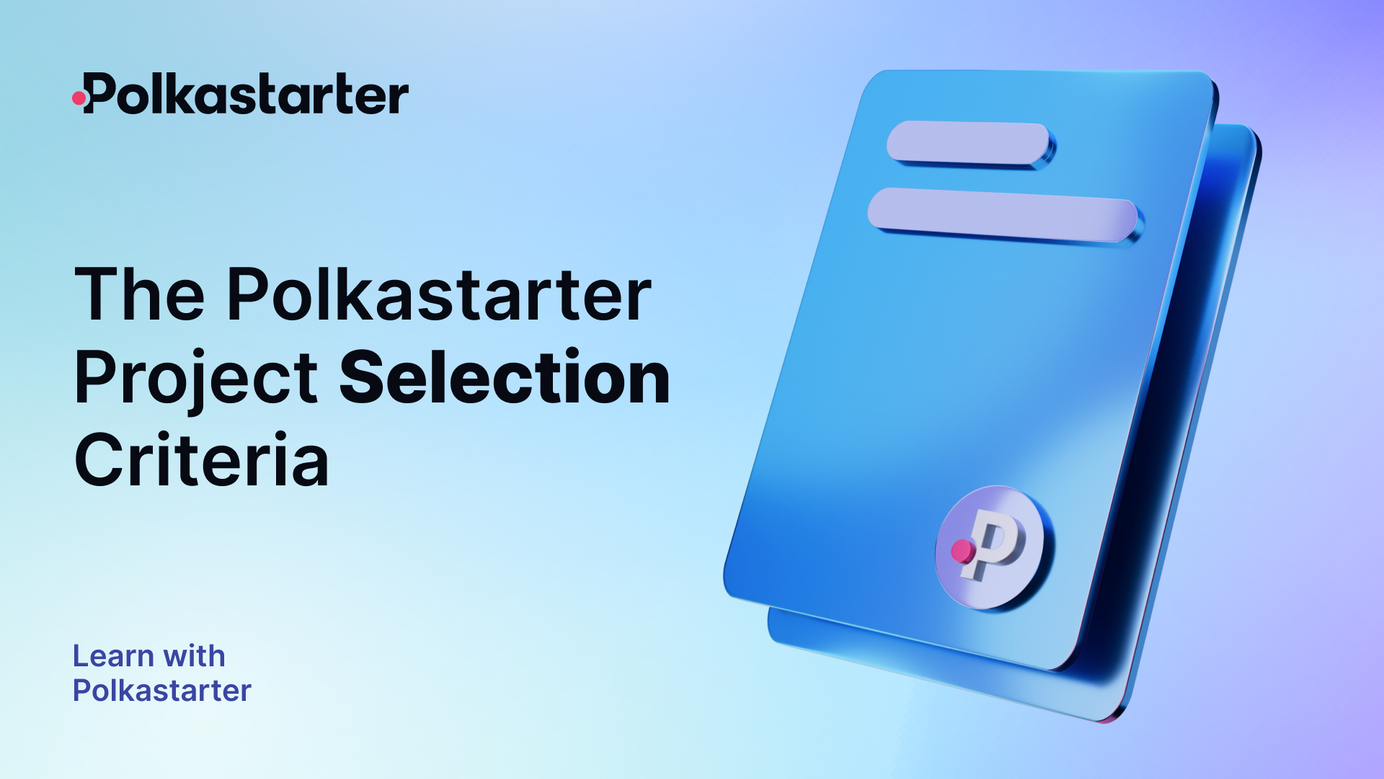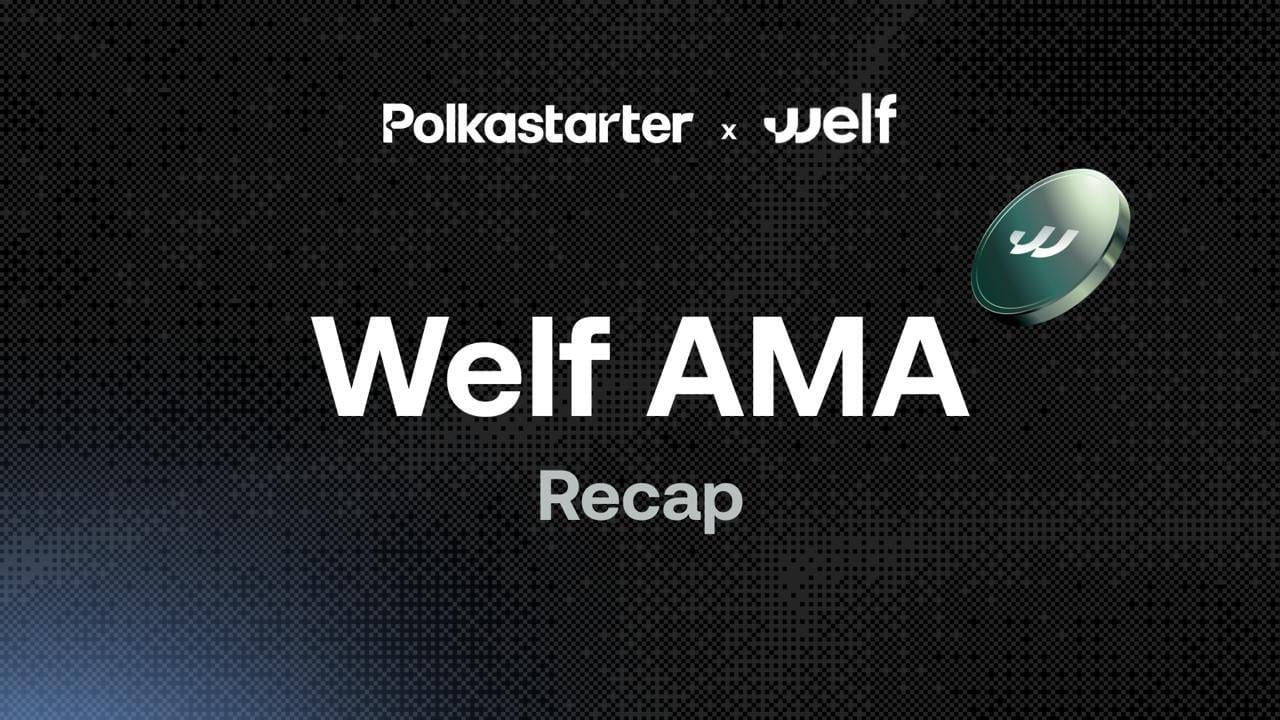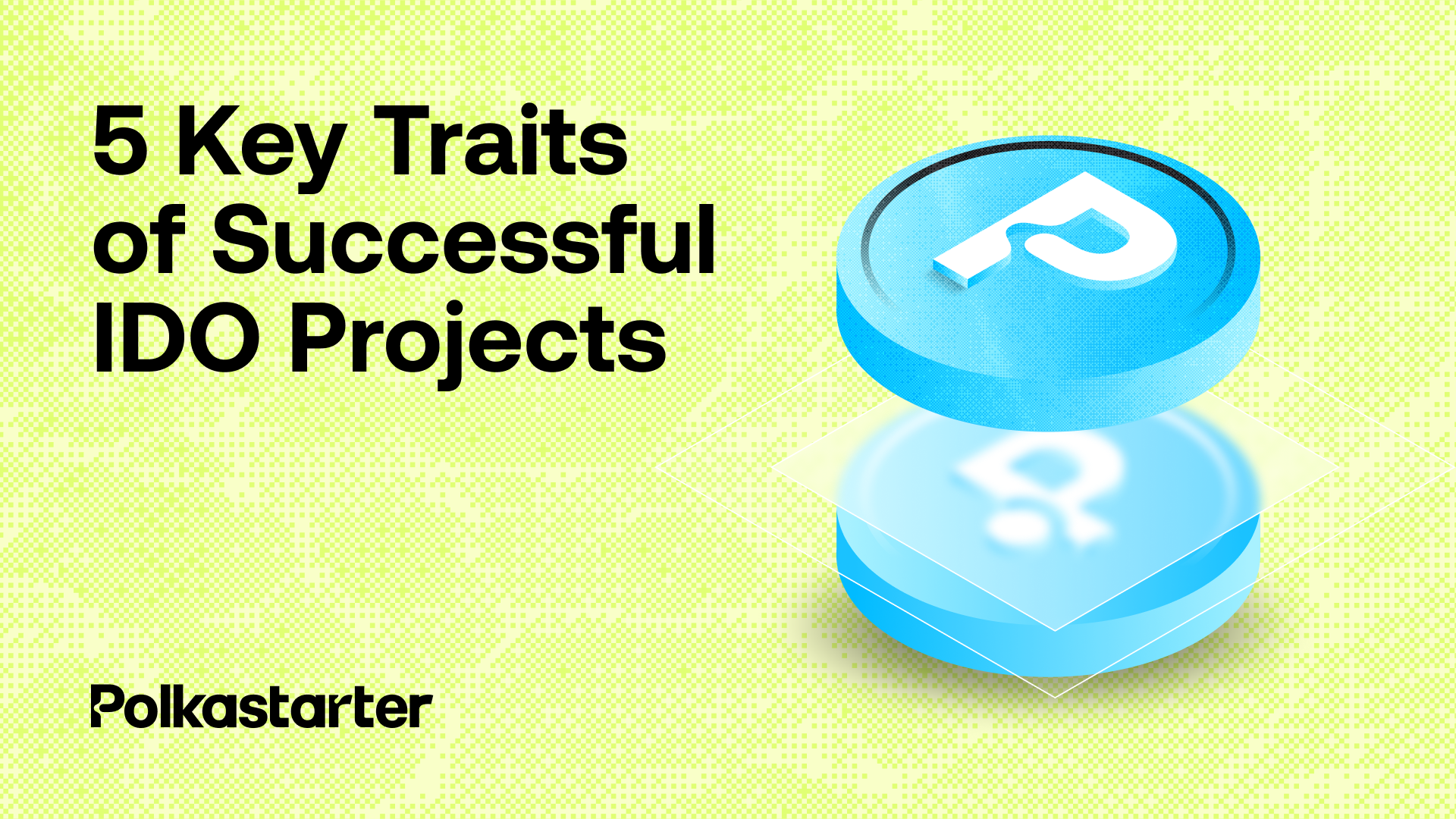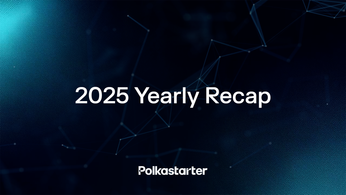
The Polkastarter Project Selection Criteria
Important: want to apply with your own project? Please submit your application here.
How we work at Polkastarter
Our mission is to attract the highest quality projects and founders in blockchain and match them with token buyers that believe in and support projects for the long run.
At Polkastarter, we pride ourselves in supporting world-class teams through Initial DEX Offerings (IDO). We select projects that not only benefit the participants but also advance and strengthen the industry as a whole.
Our selection criteria are rigorous and thorough and are constantly being refined as the ecosystem evolves. In the spirit of transparency and decentralization, it’s important for us to share the selection process, criteria, and analysis framework that all applying projects go through. With this framework, our analysts and Council members can continue to select the highest potential and most innovative teams.
Application oversight
The Polkastarter application process is overseen by the Polkastarter team and the Polkastarter Council. Our team is made up of analysts who guide the overall application process to ensure we launch with the best projects in the space. The Polkastarter Council is an independent group of industry leaders who provide an additional layer of security, legitimacy, and decentralization to the selection process. Council seats rotate once a quarter. Check out our blog for announcements of existing Council members.
Our initial selection process
The two guiding principles of our selection process are fairness and excellence. We’ve built a four-step process to ensure all projects are analyzed equally and to keep the bar for quality and innovation high.
I. Initial Application
All projects submit their application through our Governance Portal, which captures basic information such as team backgrounds, project tokenomics, details of previous fundraising rounds, and core content like website and whitepaper.
Every project is required to go through the same Governance Portal submission process regardless of their stage, their relationships, or their existing popularity in the crypto ecosystem.
II. Preliminary Due Diligence
After projects submit their application, our analysts conduct preliminary due diligence. All analysis at this stage is done from what the projects have submitted through the Governance Portal. There is no opportunity for projects to submit information through alternative avenues during this due diligence process.
Roughly 20% of projects make it beyond this stage.
III. Direct Assessment & Council Vote
If a project passes preliminary due diligence, our analysts meet with the team directly to dig deeper into the product and the roadmap, get to know the team and their backgrounds, and discuss some of the inner workings of the project. In these calls, we always ask projects to have both a visionary and a technical representative.
If a project passes an assessment by the Polkastarter team, it is handed over for review by the Polkastarter Council. Each council member can vote once, and must do so within a limited period of time. If 60% of the Council votes “yes” on the project, it is passed through to final approval.
Roughly 30% of projects make it beyond this stage — i.e. 6% of original applications.
IV. Approval and Onboarding
If a project has made it this far, they are officially onboarded into the Polkastarter family! 🎉
From here, we set the date for the IDO and explore how our team can help them beyond the fundraise. This can include marketing, messaging and communication, and support with UI and UX.
How we analyze projects
During stages II and III, our analysts are looking for specific indicators of a company’s success not only during the IDO but beyond. Below are some of the criteria and metrics our analysts and team members look for when a project is applying for an IDO on Polkastarter.
Broadly, we base our selections on five criteria: basics, development, team and leadership, and tokenomics.
The basics: application and marketing
Application. First, we take a look at the initial Polkastarter application and automatically eliminate all projects that are missing core required information, such as a website or whitepaper. We have found that these omissions are the most common reason for projects’ early rejection.
Marketing, Content, and Community. Next, we dig deeper into the content on the website, whitepaper, social channels, and blog to assess the overall marketing of the project. We look at these core channels to determine the quality of information available and overall professionalism.
Certain marketing criteria stand out among applications. We look for engaged existing communities across Telegram, Discord, Twitter, etc. to ensure there is a primed group of passionate users. We also look for an updated and detailed roadmap; transparency with the community is critical to success.
Some patterns that hurt a project’s chances include dead or broken channels, incongruent or misleading information, an outsized presence of bots and spam accounts, and low engagement with the community.
Development: idea and execution
Next, we take a look more at the technology, the product roadmap, and the execution plan.
Innovation. If the project is something that has been done many times, we tend to reject it unless we have valid reasons to think that it could be a competitor to market leaders due to, for example, a particularly experienced team. We are looking for projects that push the mission forward. In other words, projects that add a missing piece of infrastructure or tooling, aid the vision of a decentralized world or open up brand new opportunities for the space.
Projects that are rejected on the grounds of insufficient innovation tend to be copy-and-paste of existing projects without an edge that situates it as a serious market competitor.
Practicality. There are a tremendous number of novel and unique ideas out there for blockchain technology. However, if the idea has a too-distant product-market fit or an unrealistic vision, we will consider rejecting the project based on the amount of time we could anticipate it finding traction in the market. Part of this criteria is a proven track record and/or demand. If product-market fit already exists, the chances of approval are higher.
Development progress. We accept projects at all stages of development. However, all projects must be able to show alignment between their external roadmap/communications and their internal development progress. If we have reason to believe the project isn’t set up to deliver on its development promises to the ecosystem, we are less likely to move forward.
A development criteria that hurts a project’s chances is an incongruent roadmap and Github. If a public roadmap promises releases but those releases are not reflected in the company’s Github, we are less likely to approve the project. As part of the selection process, Polkastarter will request access to projects’ Githubs in order to analyze development progress first hand.
Team and leadership
If the idea fits our criteria of innovation and practicality, we dive deeper into the team. We look at objective facts like the prior experience of the executive team and the developers, and we also consider the impression they leave with us after our calls. It’s important for us to not only find projects that can succeed but find people that are genuinely excited to be in this space and want to add value to it. We want the team to endow the project with an unfair advantage by virtue of their experience, their skills, their market knowledge, and their relationships.
Tokenomics
Additionally, we make sure that the tokenomics of the token that would launch on Polkastarter make sense. Some factors we look at for tokenomics are: vesting periods and lockups, allocation post-TDE, token utility, and security.
Vesting periods and lockups. Typically, we find slow and graduated vesting periods create stability and stronger community engagement. It is safe to assume that a project without a vesting period or lockup will have a greatly reduced chance of approval for Polkastarter.
Allocation post-TDE. We like to see fair and sensible ratios of public to private token allocation. If an overwhelming percentage of tokens will be allocated to private sale investors, we will reconsider the token’s stability and community trust. We want to ensure projects engender maximum token decentralization to prevent rug pulls, which relies on sufficient public allocation.
Token utility. The relationship between the token, the project, and the community must make sense and be mutually beneficial. In the blockchain ecosystem, we don’t believe every project necessarily needs a token. Any project that comes to Polkastarter for an IDO should have a strong product-market fit not just for the project, but for the token as well.
Security. We want to ensure token buyers on Polkastarter have confidence in the security of the projects’ underlying code. An existing audit from a high-quality security firm is a strong asset in favor of a project’s acceptance.
Looking Ahead
So far, our criteria has given us a pipeline of highly successful projects. We hope that this article describes our process well and that users and projects alike can be confident in the way we work at Polkastarter. If you have any questions about our platform or the team, pass by our Telegram or X.
About Polkastarter
Polkastarter is the fully decentralized protocol for launching new ideas. Our curation process and industry access enable us to offer the best new projects in blockchain and digital assets.
With Polkastarter, decentralized projects can raise awareness, build a loyal community, and receive long-term support. Users of the platform will be able to participate in a secure and compliant environment and use assets both in and beyond the current ERC20 standard.
Polkastarter Blog - Latest Polkastarter News & Updates Newsletter
Join the newsletter to receive the latest updates in your inbox.






